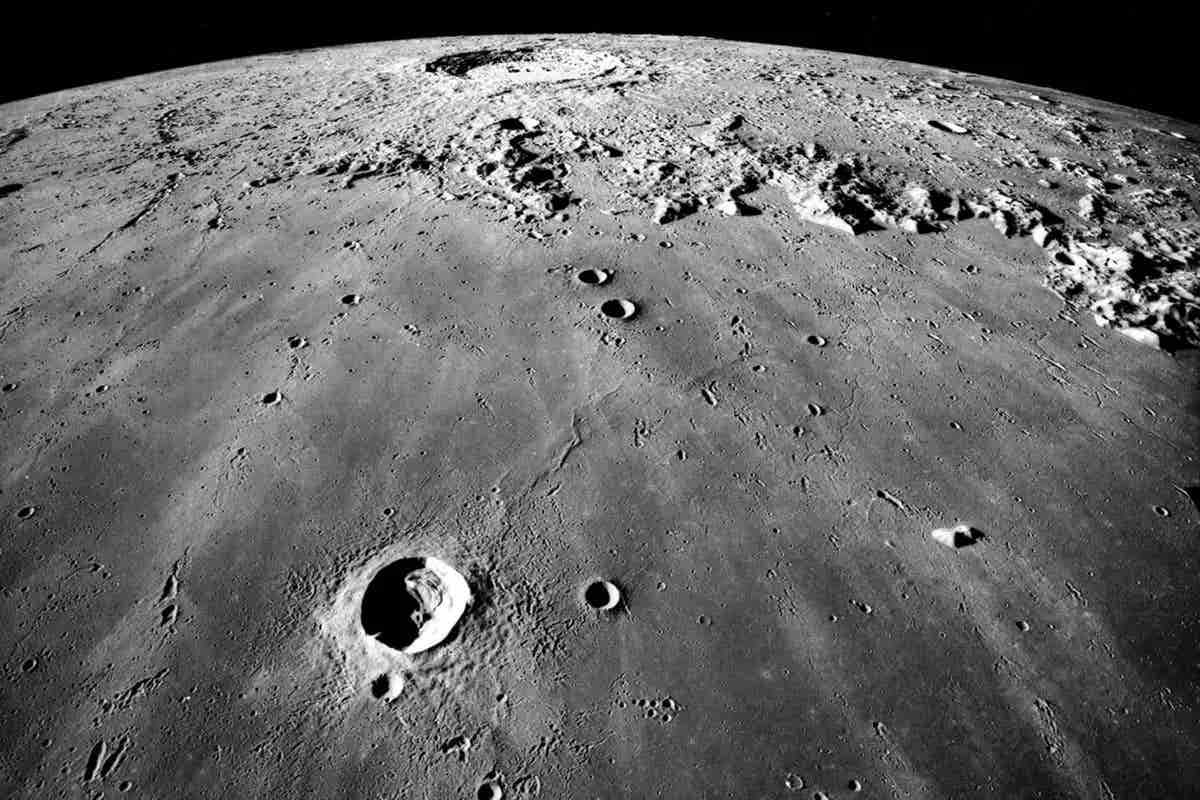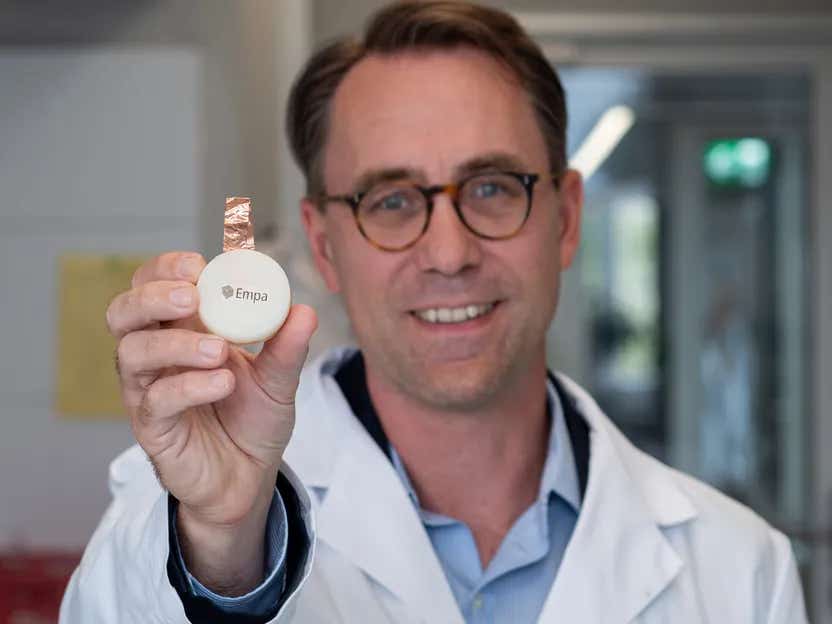Chang’e-5 lunar mission solves 120-million-year-old volcanic mystery
Groundbreaking research from Chang’e-5 reveals lunar volcanic activity 123 million years ago, reshaping the Moon’s thermal history.

Discover how Chang’e-5’s findings confirm volcanic activity on the Moon 123 million years ago, redefining its geologic timeline and thermal evolution. (CREDIT: NASA)
For decades, scientists have debated the Moon's volcanic history. While extensive evidence of ancient eruptions exists, determining how long this volcanism persisted has remained elusive. New findings from China’s Chang’e-5 mission shed light on this question, offering fresh insights into the Moon's geological activity.
The Moon’s surface features vast plains of basaltic rock known as lunar maria, formed by ancient volcanic eruptions. Samples collected during the Apollo and Luna missions revealed that volcanism occurred as early as 4.4 billion years ago (Ga) and persisted until around 2.9 to 2.8 Ga.
More recently, samples from the Chang’e-5 mission demonstrated that volcanic activity extended to at least 2.0 Ga. These findings challenge earlier assumptions about the Moon's thermal evolution, indicating its volcanic activity lasted longer than previously thought.
Remote sensing techniques have hinted at even younger volcanic-like features, particularly in the late Copernican era, less than 800 million years ago (Ma). Observations of certain terrains, such as ring-moat dome structures and irregular patches, suggest recent activity. However, these interpretations lack direct sample-based evidence to confirm their volcanic origin.
Eruptions of gas-rich magma on the Moon are known to produce submillimeter glass beads. These beads can scatter widely across the lunar surface due to subsequent meteorite impacts. Their chemical composition provides clues about their origin, distinguishing volcanic glasses from impact glasses. The process of distinguishing between these glass types has been instrumental in uncovering new details about the Moon's geologic activity.
The Chang’e-5 mission, which retrieved lunar soil from the Oceanus Procellarum region, has proven invaluable for studying the Moon’s more recent history.
A team led by Profs. Li Qiuli and He Yuyang, along with researchers Wang Biwen and Zhang Qian, analyzed approximately 3,000 glass beads from these samples. Their meticulous investigation identified three volcanic glass beads based on unique textures, major and trace element compositions, and sulfur isotope signatures.
Unlike impact glasses, which often contain embedded rock fragments or elevated nickel levels, the volcanic beads exhibited distinct chemical profiles. Sulfur isotope analyses revealed significant differences between volcanic and impact glass beads, providing a robust criterion for their identification.
Additionally, the team employed advanced analytical methods to further verify these findings, offering a clearer picture of the Moon’s volcanic processes.
Related Stories
The presence of high abundances of rare earth elements and thorium in these beads suggests that localized enrichment of heat-producing elements in the Moon’s mantle could have fueled these eruptions. This enrichment points to a complex internal structure and an active mantle dynamic even during the Moon's later stages of geological activity.
Uranium-lead dating of the three volcanic glass beads placed their formation at 123 ± 15 Ma, marking the youngest confirmed volcanism on the Moon. This groundbreaking discovery extends the timeline of lunar volcanic activity by over a billion years.
The precision of these findings, achieved through state-of-the-art dating techniques, underscores the significance of the Chang’e-5 mission in rewriting lunar history.
This evidence aligns with remote sensing observations of potentially younger volcanic features, such as irregular patches and gas escape regions. However, these findings remain unique due to their precise dating and chemical analysis, offering definitive proof of late-stage volcanic activity.
The presence of volcanic glass beads from this period challenges existing theories about the Moon’s cooling timeline, suggesting a slower and more complex thermal evolution.
The discovery of 120-million-year-old volcanic glass beads fundamentally reshapes our understanding of the Moon’s thermal history. It demonstrates that small celestial bodies like the Moon can retain enough internal heat to sustain volcanic activity for billions of years. This insight challenges traditional geophysical models and compels researchers to reconsider the mechanisms driving the Moon’s thermal evolution.
Prof. Li Qiuli remarked, “These findings provide additional constraints for geophysical models and enhance our understanding of the Moon’s internal vitality during its later stages.” The study’s implications extend beyond lunar science, offering a framework to explore volcanic activity on other celestial bodies with limited heat reserves.
The longevity of volcanic activity on the Moon highlights the influence of heat-producing elements like thorium and uranium within its mantle. Their presence indicates not only a persistent heat source but also localized geological complexities that may have sustained volcanic activity in specific regions. This finding opens new avenues for understanding the dynamics of small planetary bodies and their potential to harbor late-stage geological processes.
Published in the journal, Science, the collaborative study involved researchers from the Chinese Academy of Sciences, Nanjing University, and the State University of New York at Albany. It utilized samples provided by the China National Space Administration and received support from multiple scientific foundations, including the National Natural Science Foundation of China and the China National Postdoctoral Foundation.
The Chang’e-5 mission continues to provide invaluable data, deepening humanity’s understanding of the Moon. As research progresses, these findings may inspire future lunar exploration, potentially uncovering more secrets about our celestial neighbor’s volcanic and thermal past.
By combining advanced techniques with cutting-edge equipment, scientists are poised to delve deeper into the mysteries of lunar geology, ensuring that the legacy of missions like Chang’e-5 endures for years to come.
Note: Materials provided above by The Brighter Side of News. Content may be edited for style and length.
Like these kind of feel good stories? Get The Brighter Side of News' newsletter.
Joshua Shavit
Science & Technology Writer | AI and Robotics Reporter
Joshua Shavit is a Los Angeles-based science and technology writer with a passion for exploring the breakthroughs shaping the future. As a contributor to The Brighter Side of News, he focuses on positive and transformative advancements in AI, technology, physics, engineering, robotics and space science. Joshua is currently working towards a Bachelor of Science in Business Administration at the University of California, Berkeley. He combines his academic background with a talent for storytelling, making complex scientific discoveries engaging and accessible. His work highlights the innovators behind the ideas, bringing readers closer to the people driving progress.



